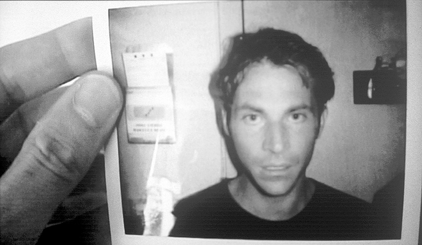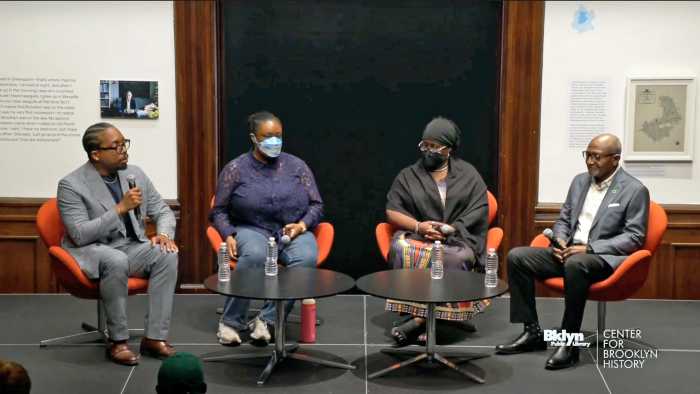Amnesiac documentary is provocative, but has odd gaps as well
French director Chris Marker once wondered how people who don’t film or photograph their experiences can remember them. Amnesiac photographer Douglas Bruce lived out his ponderings. One day, he found himself on the subway near Coney Island, with no memory of who he was or how he got there. “Unknown White Male” tracks his efforts over the next 21 months to reinvent himself.
The film is most compelling in the final half hour, when the focus shifts slightly away from Bruce and towards to his British friends. As it turns out, director Robert Murray isn’t an impartial observer––he and Bruce are old buddies. Traveling to London, Bruce takes in 10 Downing Street and the changing of the guard at Westminster Abbey like a tourist. He reintroduces himself to his circle of male friends. Despite everyone’s best intentions and efforts, the situation is awkward. Bruce used to have a passion for the sport of West Indian cricket. When a friend brings it up in e-mail, Bruce asks whether it’s an insect or drink.
After realizing that something very strange had happened to him on July1, 2003, Bruce went to a police station for help. He had no identification on him, just a few cryptic scraps––dog medication and a piece of paper with a woman’s name and phone number on it. During a stay in a psychiatric hospital, he suddenly learned to sign his name again. He discovered that the phone number belonged to the mother of a woman whom he’d briefly dated. Even after two MRIs, two CAT scans, and 26 blood tests, doctors couldn’t find anything physically wrong with Bruce, apart from a seemingly benign tumor on his pituitary grand.
No one ever comes up with a solution to his amnesia; the film ends with his memory still lost.
“Unknown White Male” is the kind of documentary that we’re likely to see more of in the wake of the commercial success of Michael Moore’s “Bowling for Columbine” and “Fahrenheit 9/11,” Morgan Spurlock’s “Supersize Me,” and Luc Jacquet’s “March of the Penguins.” Murray doesn’t have a heavy-handed political agenda. However, he has made a film at least as slick as most low-budget fiction films. Not content simply to let people speak, he illustrates interview footage with unenlightening images like a close-up of the back of an EMT worker’s jacket. The early scenes, which attempt to illustrate Bruce’s Coney Island train ride and first experiences after leaving the hospital, strive hard for beauty and fail. The repeated use of a distorting fisheye lens is particularly inept.
Critic Andy Spletzer has gone so far as to suggest that “Unknown White Male” is really a fictional mockumentary being presented as fact. He’s pointed out that the decor in Bruce’s loft doesn’t match the taste and means of a yuppie stockbroker who made enough money to retire at 30 and that if one pays close attention, the doctor interviewed near the film’s end speaks about Bruce’s case as if it were hypothetical.
One doesn’t have to go this far to have some questions about Murray’s use of home video. Is it a mere coincidence that Bruce started filming himself only six days after losing his memory? “Unknown White Male” relies heavily on Bruce’s videos––the images shot by Murray, with a high definition camera, are notably clearer––but there are some strange gaps.
Why does it include footage of his British friends but not his New York cadre? Did Murray choose Bruce as a subject because Bruce already had a passion for documenting his own life, as noted by his father? A photography teacher claims that his pre-amnesia work was “ideologically problematic”––it seems to consist of images of poor people of color––but that his newer photos, mostly made of close-ups of women’s faces, are a true self-portrait.
One doesn’t come away from “Unknown White Male” with much sense of who Bruce really is, but it does prompt reflection on his predicament. For one thing, a less privileged man undergoing the same condition would probably have wound up homeless. The film’s strongest at its most ambivalent, when Bruce’s relatives and friends are forced to acknowledge how much their relationship with him has changed. Murray tries to put a positive spin on this situation––when Bruce discovers a great new band called the Rolling Stones and experiences snow and fireworks as if for the first time––but if one reads between the lines, Bruce’s dilemma is a lot more troubling.
To its credit, “Unknown White Male” is often genuinely thought-provoking, but it’s torn between the void of memory loss and a tendency to gloss over the difficulties of Bruce’s struggle.
gaycitynews.com

































